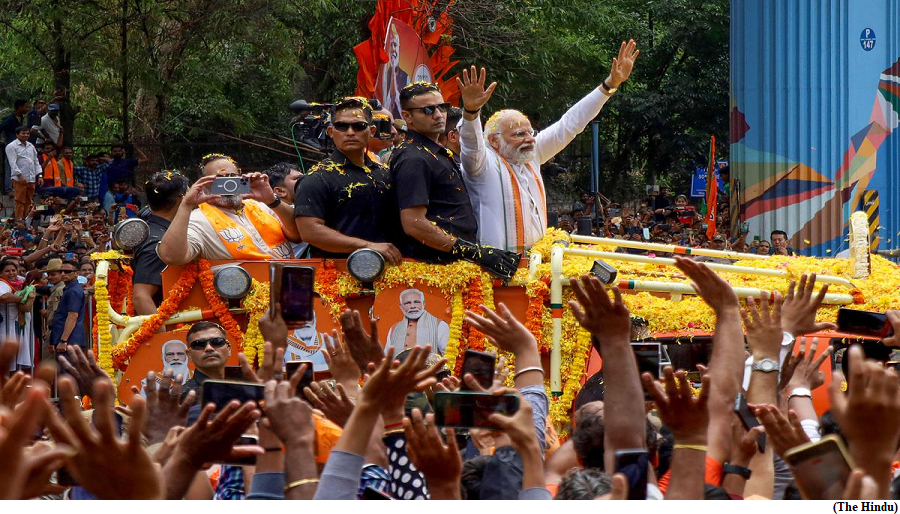Tamil Nadu amended law on jallikattu valid, SC (GS Paper 2, Judiciary)

Why in news?
- The Supreme Court recently termed jallikattu a “type of bovine sport” existing in Tamil Nadu for at least a century.
- It did not interfere with the State legislature’s finding that the bull-taming event is part of the cultural heritage and tradition of the people.
Key Highlights:
- A Constitution Bench headed by Justice K.M. Joseph upheld the validity of the Prevention of Cruelty to Animals (Tamil Nadu Amendment) Act of 2017, and Prevention of Cruelty to Animals (Conduct of Jallikattu) Rules of 2017.
- The court also found similar laws passed by Karnataka and Maharashtra, allowing bullock cart races and buffalo racing ‘kambala’, valid.
- The Constitution Bench held that the jallikattu law “substantially minimises” the pain and suffering of the animals participating in the event.
- The judgment however directed that the district administrations and competent authorities in Tamil Nadu would be responsible to ensure that jallikattu events are conducted in strict compliance of the safeguards laid out in the 2017 Amendment Act and Rules.
- The court described jallikattu as an event during which “a bull is set free in an arena and human participants are made to grab its hump to score in the game”.
Claims by petitioners:
- Jallikattu was banned in 2014 by the Supreme Court in the A. Nagaraja case and called “cruel”. But that was before the State passed the Amendment Act in 2017, introducing several measures to prevent any abuse to the participating bulls or loss of human life.
- The Bench held that the State was empowered to enact the 2017 law.
Conclusion:
- The SC held that amendments had been passed by the state governments after the apex court had banned Jallikattu and similar activities in 2014 in the case Animal Welfare Board of India vs A Nagaraja & Ors.
- The state legislature had the legislative power to make these amendments in accordance with Entry 17 to List III of the Seventh Schedule of the Indian Constitution.
- It added that the laws provided enough safeguards against the infliction of cruelty to animals and punishments. Since these amended laws had received presidential assent, they could not be faulted.
Elections and the airwaves
(GS Paper 2, Governance)
Why in news?
- In the recently-concluded Karnataka Assembly elections, political parties were provided free airtime on public broadcasters, All India Radio (Akashvani) and Doordarshan during elections.

Details:
- The allotment was available to six recognised national parties — the Bharatiya Janata Party (BJP), the Indian National Congress (INC), the Bahujan Samaj Party (BSP), the National People’s Party (NPP), the Aam Aadmi Party (AAP) and the Communist Party of India (Marxist) and one recognised State party, the Janata Dal (Secular).
- The parties were allocated a base time of 45 minutes and additional slots based on performance in previous polls. A total of 630 minutes of free airtime was issued under this allotment.
What is the rationale of the scheme?
- The facility to provide free airtime for political parties during elections was given statutory basis through the 2003 amendment to the Representation of People Act, 1951.
- The Supreme Court, in its famed judgment (The Secretary, Ministry of Information and Broadcasting vs Cricket Association of Bengal and ANR, 1995), held that airwaves are public property and its use should serve the greater public good.
- Elections being the lifeblood of a democracy, the misuse or abuse of airwaves to gain unfair electoral advantage is a key regulatory apprehension of governments around the world.
Global practices:
- In the U.S., for example, the Federal Communications Commission, which regulates the electronic media in the country, devised the fairness doctrine to keep electioneering on the airwaves equitable.
- The now defunct fairness doctrine placed a positive obligation on broadcasters who carry political content of one candidate on its programme to extend the same to another candidate in the electoral fray.
- In the U.K. too, political parties are allocated designated slots by Parliament, called the party political broadcasts (PPBs) to convey important political information to the people.
- The British Communication watchdog, Ofcom, is responsible for ensuring that PPBs are included in every licensed public service television channel and commercial radio services.
- Similar requirements are adopted in Singapore, Brazil and Japan.
What is the working of the scheme?
- In the Karnataka elections, the BJP received 167 minutes of broadcast time on both DD and Akashvani, while the Congress got 174 minutes and the JD(S) got 107 minutes.
- Time vouchers are distributed by a lottery system by the Election Commission in a transparent process to obviate any preferential treatment in getting primetime slots.
- The transcripts of political parties are vetted to ensure that they adhere to relevant codes. These codes proscribe any content which are inter alia critical of other countries, attack religions or other communities or incites violence and personal attacks.
- In case of any disagreements over the content of the script as vetted by the public broadcaster, it is referred to an Apex Committee comprising members from Akashvani and DD whose decision is final.
- In the Indian media landscape, due to the pattern of ownership of media houses, the public generally identify a broadcaster as being affiliated with one political party or the other. In this regard, State-sponsored airtime provides more diversity and colour to the electoral process.
- The guidelines by the Election Commission of India (ECI) also require that a maximum of two panel discussions are also aired by Akashvani and DD.
- These discussions provide an excellent platform for parties, both big and small, to debate and criticise each other’s policies and manifestos, and in general promote an informed citizenry.
What are the operational challenges?
- The fact that the scheme is available to national and recognised State parties may attract arguments that it is not truly equitable.
- In light of the recent retraction of the national party status for the Nationalist People’s Coalition (NPC) and the Trinamool Congress (TMC), this observation becomes important. However, the ECI is constrained by the considerations of practicality and the fact that airwaves are not an infinite resource.
- The Apex Committee comprises officials from Akashvani and DD and are expected to sit in review of their own decision in case of conflict with the political party on the content of the transcript. This leaves scope for conflicts of interest and therefore, a more representative committee may be constituted.
- There are also calls for extending the provision to cover private broadcasters akin to the fairness doctrine of the U.S.
- A designated slot may be mandated for private channels to air content equitably and provide a platform for smaller parties and candidates. The political broadcast may be clearly differentiated from regular news broadcasts and programmes.
Way Forward:
- The 2024 General Elections will witness unprecedented levels of electioneering in the media.
- As spaces for sober, fair, considered and thoughtful debates shrink in a frenzy to grab attention, it is imperative that airwaves are used to nourish and enrich the Indian democracy and set standards for other electoral democracies.
What are RBI regulations on green deposits?
(GS Paper 3, Economy)
Why in news?
- Recently, the Reserve Bank of India (RBI) came up with a regulatory framework for banks to accept green deposits from customers.
- Under the new framework, banks that accept green deposits will have to disclose more information on how they invest these deposits.

What are green deposits?
- Green deposits are not very different from the regular deposits that banks accept from their customers. The only major difference is that banks promise to earmark the money that they receive as green deposits towards environment-friendly projects.
- For example, a bank may promise that green deposits will be used towards financing renewable energy projects that fight climate change. A bank may also avoid using green deposits to invest in fossil fuel projects that are considered harmful to the climate.
- A green deposit is just one product in a wide array of other financial products such as green bonds, green shares, etc., that help investors put money into environmentally sustainable projects.
What does the RBI’s regulatory framework say?
- The RBI’s framework for the acceptance of green deposits lays down certain conditions that banks must fulfill to accept green deposits from customers.
- Firstly, banks will have to come up with a set of rules or policies approved by their respective Boards that need to be followed while investing green deposits from customers.
- These rules need to be made public on the banks’ websites and banks will also have to disclose regular information about the amount of green deposits received, how these deposits were allocated towards various green projects, and the impact of such investments on the environment.
- A third-party will have to verify the claims made by banks regarding the projects in which the banks invest their green deposits as well as the sustainability credentials of these business projects.
- The RBI has come up with a list of sectors that can be classified as sustainable and thus eligible to receive green deposits. These include renewable energy, waste management, clean transportation, energy efficiency, and afforestation.
- Banks will be barred from investing green deposits in business projects involving fossil fuels, nuclear power, tobacco, gambling, palm oil, and hydropower generation.
- The new rules are aimed at preventing greenwashing, which refers to making misleading claims about the positive environmental impact of an activity.
Will green deposits help depositors/investors and the environment?
- Depositors who care about the environment may get some satisfaction from investing their money in environmentally sustainable investment products. However, there are challenges, for the range of projects in which green funds can be invested by the bank is limited by design.
- When it comes to protecting the environment, green investing enthusiasts believe that putting money into green projects may be one of the best ways to help the environment.
- Critics, however, argue that green investment products are often just a way to make investors feel good about themselves and that these investments don’t really do much good to the environment.




